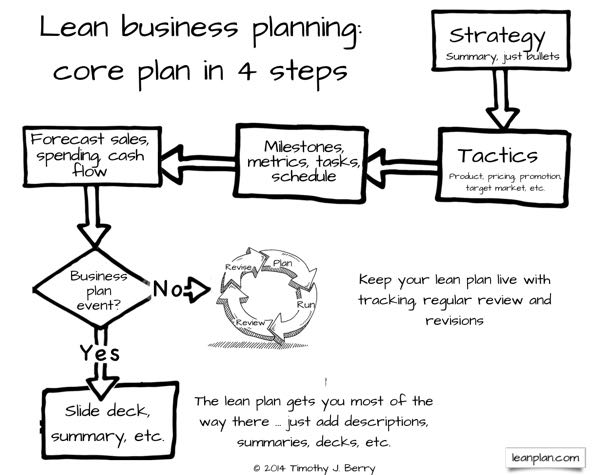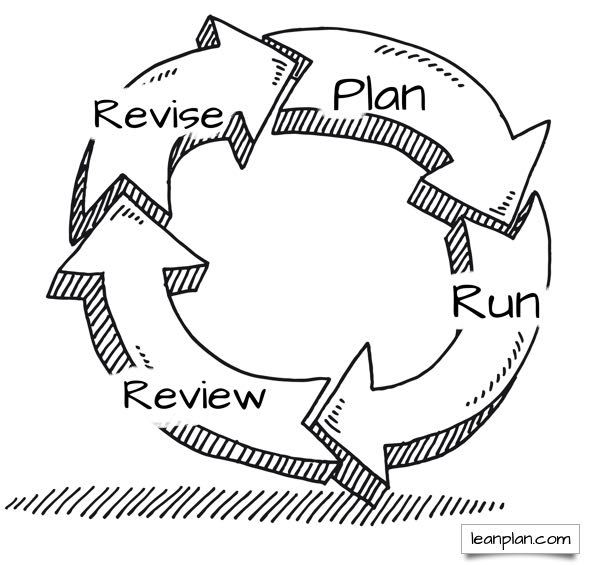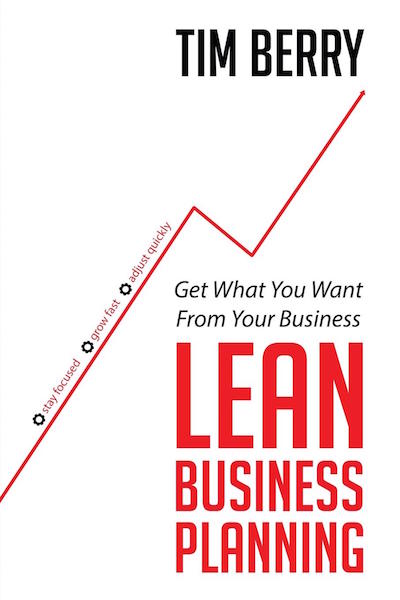Nine years ago, Dale Partridge was just like most entrepreneurs.
He was launching his first business–a software company that helped rock-climbing gyms set their routes–and learning how to grow it into something successful.
As the company grew, he picked up more knowledge about how to create and scale a business and he parlayed that experience into the next one, repeating the pattern as he built multiple companies from the ground up.
Today, he’s a serial entrepreneur with a total of 7 multi-million dollar businesses under his belt and the best-selling author of the book People Over Profit. His company, Sevenly, has raised more than $4,000,000 for charities all over the world.
But that was just the first act for Partridge. After all of his success, he decided to change directions–selling off the majority of his stake in each company and starting something new.
His latest venture, StartupCamp.com, teaches other entrepreneurs how to build the company of their dreams in tandem with living a balanced life. So far, more than 3,000 people have signed up for his online course and he’s hosted a myriad of in-person seminars and events.
In May, he’ll be releasing his second book, Launch Your Dream, A 30-day Plan For Turning Your Passion Into Your Profession.
We had the chance to interview Partridge to learn about his experience building multiple purpose-driven businesses and get his advice for other entrepreneurs hoping to do the same.
Slow march toward success
One of the biggest lessons Partridge has to share is about the importance of consistency over time.
There’s a great fallacy in entrepreneurship that says starting a company is the biggest portion of the battle. Often, we’re enthralled with the chase of building and creating something new. We spend months–or years–on analysis, prototypes, beta launches, and revisions.
Then the day comes to launch the business and it feels like all of the hard work is coming to a close. Unfortunately, this isn’t how it works. Starting a business is tough. But it’s just the beginning.
Although he’s now a well-known entrepreneur with a sizable online audience, Patridge wasn’t always an internet celebrity.
His journey started from the same humble beginnings as anyone else. But what he learned from the climb toward success is that it’s a slow and steady climb up the mountain.
“[When they first start their company], people think it’s the Superbowl,” says Patridge. “It’s really the first game of the season.”
The launch of any business is really a starting point. And what comes next is consistent work that builds the company bit by bit, one day at a time.
For his own brand and each of his businesses, consistency–not rapid pace–was the key to building an audience. “What people want is consistency,” he explains. “Consistency beats frequency any day.”
He cites his own experience over the past few years as a testament to consistent work and dogged attention to detail from the start. When he first launched his podcast in 2015, he had just over 1000 plays even with already having an established audience. Today, that first episode has been played more than 300,000 times.
“Remember that when you’ve built your audience two years from now, people are going to go back and listen to the first episode,” he says, explaining how the numbers grew as his brand and his reach grew over the years.
He encourages other entrepreneurs to find something they can do every day and then do it–every single day–hundreds of days in a row. For him, it has been podcasting and sharing something through his social channels. He’s remained committed to his specific frequency every day for years, and over time that work has paid off. Even his early work that didn’t garner much attention has now been seen by thousands or hundreds of thousands of people.
“That work now? Don’t skimp on it,” he says with emphasis.
Building trust
Beyond his core businesses, Partridge has built a brand around his personality.
He’s known as an entrepreneur and a businessman, but also a self-styled relationship guru and life coach. A quick look at his Facebook or Instagram pages will show you that he isn’t all business.
“I spend a lot of my time talking about marriage, talking about parenting, talking about healthy families,” he explains. And it’s often not the type of fluffy life advice that you find online. Partridge has posted deep thoughts and insight on topics ranging from personal connections to masculinity, fatherhood, and cell-phone usage.
And people listen because of the trust he’s built with his audience.

That brand-building and trust have also helped propel his businesses forward. Talking about marriage and children helps him sell $1,000 courses about entrepreneurship.
He calls it “irony”, the ability for him to attract an audience based on the things he shares about his personal life who then become fans of his business advice. Since people are used to cut-throat business coaches with growth-at-all-costs mindsets, it makes sense that an entrepreneur as successful as him espousing the need for balance would stand out in a crowded market.
“Someone signs up on my Startupcamp course on how to start a business or buys one of my books because they trust me on my personal side,” he says. “It’s a great way to build trust in a natural way.”
Being authentic
Building that level of trust with our audience–where they’ll buy from you and rally around your brand and your product–doesn’t just come from consistency, though.
Authenticity is the other key component. People have to believe what you’re saying or, more important, believe that you believe what you’re saying in order to trust you. And in a world of “hackers” and “ninjas”, authenticity isn’t always the first thought in an entrepreneur’s mind.
“Genuineness and authenticity are not always as authentic as you hoped,” explains Partridge. He says that many entrepreneurs feign authenticity but it’s obvious when it’s not genuinely motivated by good intentions.
You can’t fake it, says Partridge. Not only will it ring hollow, but you’ll be called out for it. He points out that, “people are getting a pretty good BS meter on the internet.” And anyone who has seen an “expert” crash and burn online knows it’s true.
Authenticity isn’t just important–it’s the price for admission in most cases. The alternative is to be thrown to the wolves that lurk in comment sections and subreddits around the Internet.
Measuring your success
As an entrepreneur, there are a million ways to measure your own success. Sometimes it’s measured in terms of users, revenue, or profits. Other entrepreneurs count how many people they employ, how much money they’ve raised, or even their customer satisfaction ratings.
Partridge measures his success a bit differently. Business metrics–altogether–make up only half of the equation. The other half of success is how well you’re managing the rest of life.
“For me, I really try to look at success in a holistic way,” he explains about his personal measurement. “If you’re really successful at business but you’re not successful at home, then you’re not successful in my eyes.”
He offers a few questions to consider: “How are your relationships? How well are you stewarding your finances? How healthy are you? What do your children think about you? How’s your relationship with your spouse?”
This is how he sees his own version of success. But as a business coach through StartupCamp, it’s also how he sizes up other entrepreneurs. He tries to read between the lines to determine their true priorities and their reason for starting a business.
“You can really see that in people,” he says about talking with other entrepreneurs. “What are the priorities? Are their priorities money? Are they something else?”
Many entrepreneurs, he says, turn to business success as a way to mend what he calls “some kind of brokenness.”
“I can sense brokenness pretty quickly,” he says. “[Sometimes], people are trying to earn approval.”
And that’s maybe the greatest lesson to learn from Partridge’s success. It’s that people’s intention matters–that your intentions matter. And doing what’s right isn’t the same thing as doing what’s easy.
The right way is often the hard way
Partridge is quick to admit that adhering to principles of trust and integrity are not easy. This way of running a business is slower and more difficult.
“Integrity, maturity, putting people first–it comes at a cost,” he explains about his dedication to building a mission-driven business. “It’s not free. It’s not fast. It’s not easy. It’s always the harder way. It’s always the slower way. It’s always the more patient way.”
But even still, to him, doing things the right way–the way that emphasizes the value of people and the importance of balance–is worth the extra time, money, and effort. It’s a sacrifice he’s willing to make.
“I think for a long time, I was a knower instead of a learner–I had a sense of pride that came with me,” he explains about what led him to focus on his current business and the other aspects of his life. “I hurt a lot of people.”
This kind of self reflection can be difficult. Especially when it leads you to conclusions that may not be comfortable or convenient. That’s when things get can seem darkest–when you’re forced to choose between what you’ve been doing and what you know you should be doing.
Now, he’s cashed out of most of his businesses and is focused on running StartupCamp. He has more time for family and relationships and often shares his advice through social media on the importance of those ties. That’s the kind of advice he has for entrepreneurs now–it’s to focus on building something great only to the point where you don’t sacrifice the important things to achieve it.
“Spend time cultivating your relationships,” he tweeted in March. “The fruit of your life won’t be things you can keep in a storage unit.”
Although Partridge had accomplished so much by 28 years old, it was stepping away from all of that and making the hard choices about his priorities that led him to his happiest point.
It may not have been easy. But, for him, it was right.
Check out these articles for more helpful insights…







